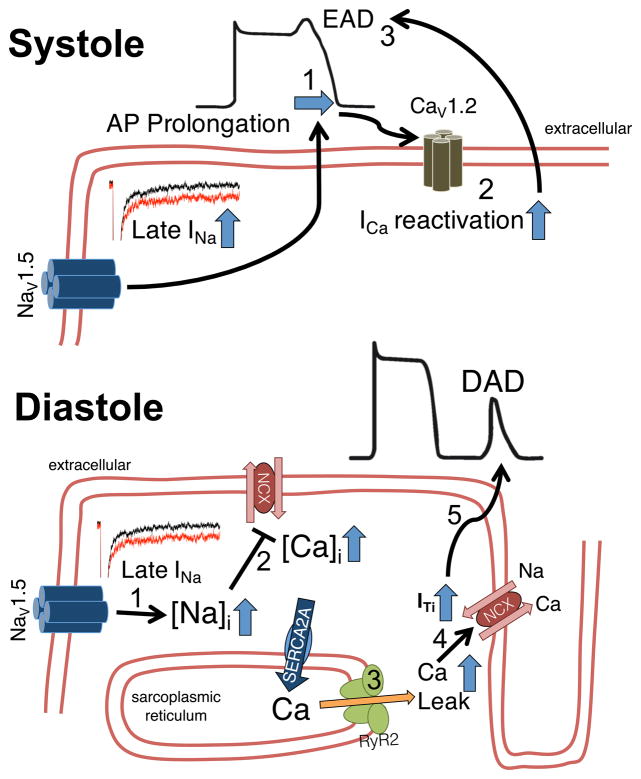Figure 5.
Proarrhythmogenic mechanisms of enhanced late INa. In systole (upper panel), enhanced late INa leads to AP prolongation (1). The longer AP plateau phase increases the likelihood of ICa reactivation (2), which may lead to early afterdepolarizations (EAD, 3). Lower panel: The increased amount of Na influx also results in increased intracellular Na (1), which impairs Ca elimination (2) by the Na/Ca exchanger (either less forward or even increased reverse mode activity). In diastole, the increased intracellular Ca facilitates SR Ca leak (3), which could lead to transient inward current (ITi) by the Na/Ca exchanger (4). The latter can result in delayed afterdepolarizations (DAD, 5).

